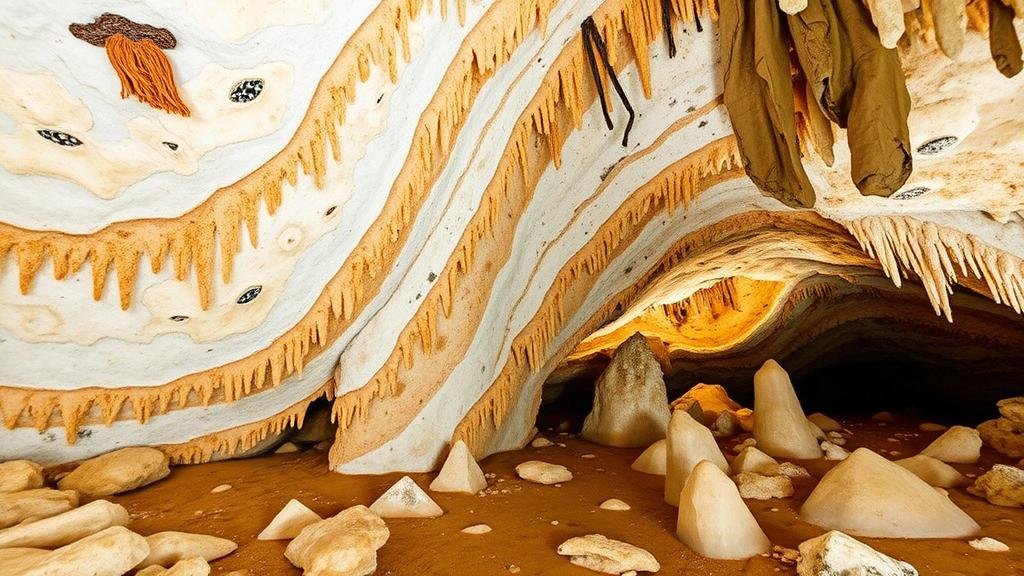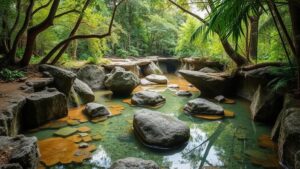Exploring the “Crystal Caves of Naica” in Mexico, home to immense, ancient gypsum crystals.
Exploring the Crystal Caves of Naica in Mexico
Nestled within the Chihuahua region of Mexico, the Crystal Caves of Naica have captivated scientists, explorers, and tourists alike with their extraordinary formations of massive gypsum crystals. Discovered in 1910, this subterranean wonder is known for having some of the largest crystals in the world, reaching lengths of up to 12 meters (approximately 39 feet) and weighing several tons.
Location and Discovery
Located within the Naica mine, approximately 300 kilometers (around 186 miles) southwest of the city of Chihuahua, the caves were inadvertently discovered during lead and silver mining operations. The main chamber, now referred to as the Cave of the Crystals, houses vast amounts of selenite crystals, a transparent variety of gypsum, which formed over millions of years under specific conditions of hydrothermal activity.
The Formation of the Crystals
The stunning crystals were formed in a unique geological environment. High temperatures and mineral-rich water played a crucial role in their development. The caves average temperature hovers around 58 degrees Celsius (136 degrees Fahrenheit), with high humidity levels, creating an ideal setting for the long slow crystallization process. As water evaporated from the cave over thousands of years, it left behind pure gypsum, resulting in the elongated crystal formations we see today.
The Environment of the Crystal Caves
Temperature and Humidity
The extreme temperature and humidity levels within the cave present numerous challenges for explorers and researchers. With temperatures reaching excessively high levels, prolonged exposure can lead to heat-related illnesses. As a result, specialized equipment and careful planning are necessary for any expedition into these depths.
Biodiversity and Ecosystem
Interestingly, the inhospitable environment of the caves also creates a unique ecosystem. Microbial life has been discovered, thriving in extremophilic conditions. e organisms provide insight into the adaptability of life, which has direct implications for astrobiology, particularly in understanding how life might exist in extreme extraterrestrial environments, such as on other planets or moons.
Scientific Research and Significance
The Crystal Caves have attracted scientific attention since their discovery. Researchers utilize the environment to study crystallization processes and the mineralogy of gypsum. Also, the caves extreme conditions allow for valuable research into the limits of life on Earth and beyond.
- In 2000, the caves were explored by scientists as part of a study on extremophiles, leading to discoveries related to microbial diversity.
- Studies conducted in the caves have implications in fields ranging from geology to climate science, helping to reveal historical climatic conditions over millions of years.
Challenges and Preservation Efforts
While the Crystal Caves of Naica are a breathtaking natural wonder, they face significant threats. Mining activities around the site have led to water levels decreasing, which could impact the caves environment and the future of the crystals. Also, changes in humidity and temperature can lead to degradation of these ancient formations.
Preservation efforts are crucial to maintaining this unique geological feature. The Mexican government and the mining company, Minera del Norte, have initiated measures to protect the caves, raising awareness about their significance both culturally and scientifically.
Visiting the Crystal Caves
While access to the Crystal Caves has been limited due to safety and preservation concerns, there are opportunities for scientific research and guided tours under strict regulations.
- It is recommended that visitors equip themselves with proper protective gear if allowed entry through authorized tours.
- With ongoing research, the prospect of controlled tourism offers a potential avenue for funding further preservation efforts.
Actionable Takeaways
The Crystal Caves of Naica represent a geological marvel that combines natural beauty, scientific significance, and ecological uniqueness. To appreciate this wonder:
- Stay informed about ongoing research and preservation efforts to help raise awareness.
- If you plan to visit, ensure participation in authorized tours that prioritize sustainability.
- Understanding and respecting the delicate ecosystem within the cave can contribute to its preservation for future generations.
The Crystal Caves of Naica are not just a visual spectacle; they are a symbol of Earths dynamic geological processes and the potential for life in extreme environments. By recognizing the importance of these caves, we can contribute to their future protection and appreciation.



